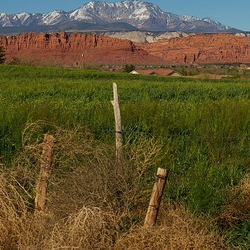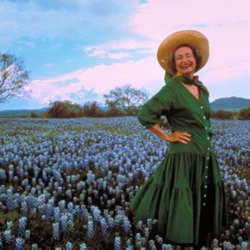When I first moved to this small town in eastern Los Angeles county I thought I had moved back in time at first, to the days of the old west when I saw cowboys (or people on horses dressed up like them) all over, often riding down the main street in town, and even hitching up their steeds to the local bars and restaruants (in front of which there was often a place to hitch them up amazingly enough.) We heard pigs and chickens in our neighbor's yards, and many had a goat or two, and we saw wagon wheels leaning on trees, houses and fences nearly everywhere we looked (having a real old wagon wheel is really 'in' now I guess.) But I knew I was in the old west when on the often deserted roads a lone tumbleweed would lazily roll across in front of my car. It was like seeing an old movie. Since then I have gotten over the novelty of tumbleweeds, partly because I saw them a lot as a kid in New Mexico so they weren't really a new thing, but mostly because they were everywhere. And considering what a harsh, desolate climate Acton was situated in, I was not going to be surprised if it was Acton's official plant. Sadly, turns out most towns don't have official plants. But if they did...
So it was then I decided to learn about tumbleweeds and write an article about them. Turns out tumbleweeds are not a single plant, but a 'gardenology' description of a group of completely unrelated plants that have devised the same dispersal, and often, the same reproductive strategy: basically to grow rapidly in a desolate climate, die when things are no longer right, come loose from their root stock and then have nature take its course. This means they are totally at the mercy of the wind, which blows their basically spherical carcass across the landscape as they drop their progeny as they go (either seeds, modified seeds or spore). Most tumbleweeds are indeed spherical, which makes them much easier to blow about (I've not seen too many cubical tumbleweeds, or any tumblevines).
Though most think of the dry, barren, deserted southwestern United States when they think of tumbleweeds, it turns out almost all are not native this this area, or even to North America, though most do indeed come from dry, relatively barren grassland or desert areas of the world. Most of the 'tumbleweed' species originate from Asia or Africa, but a few are native to the New World. For the most part they are also considered agricultural weeds and are usually undesirable plants. They not only compete for vital amounts of soil moisture and nutrients, but they actually physically damage the landscape, eroding the delicate top soils as they tumble about.


Tumbleweeds in southern California of the Salsola variety, still green thanks to some roadside moisture
The genus most often referred to when discussing tumbleweeds are those plants in the Russian Thistle familay, Salsola. I am not clear which species are the tumbleweeds as some sources list one or two, while others list them all and still others lump them all together into a single species. These plants are experts at reproduction and dispersal and have historically been a challenging plant to control. The 'seeds' are really small packets of 'ready-to-root', partially developed plantlets enclosed inside. As these tumbleweeds tumble, the seeds fall off and germinate as soon as they detect suitable temperature and moisture levels (mostly germinating in fall of winter when there are some rains, though the acceptable temperature range is very broad, from blazing hot to nearly freezing). The packet bursts open and the plantlet shoots its tap root down in less than twelve hours, fairly deep eventually seeking soil moisture, and then it has a good foothold in the envirnoment (often an agricultural field). This root can reportedly go down several feet making it hard plant to compete with in an agricultural setting. It is also one of the most drought-tolerant plants there are (seeing these green plants in summer along the roadside here in Acton that hasn't seen but an inch or so of water in a year lets one appreciate this fact).

Dead Salsolas along the roadside ending up along a fence, where, if things go well, their seed will germinate in the late fall or winter when it finally rains (if it ever will again here).
This plant is not a horribly unattractive plant while it is alive, forming a nice, neat spherical deep green shape with many prickles. It has ornamental striping along its branches and less than spectacular flowers. But to a guy who likes spiny, odd things, this plant is not that ugly... until it dies. It isn't a great plant for the collector, however, as it is a short-lived anual, dying halfway through the growing season and then rolling off into the sunset.


tumbleweeds green in summer where there is some roadside water.


Salsola kali near my home in mid summer (left or above) and a close up of the foliage and stems (right or below)


Nice color changes can be seen along the roadsides in autumn, in southern California
As a child I recall this plant in New Mexico piling up along the fences in the high deserts (like where I live now). It was always a pain (literally) to have to hike through, so my memories of it are not all that fond. It made running about in bare feet a very uncomfortable experience as well.
Ther are many other species of tumbleweeds and Wikipedia has an excellent article.
Here's a link to a great youtube video with tumbleweeds tumbling.

















